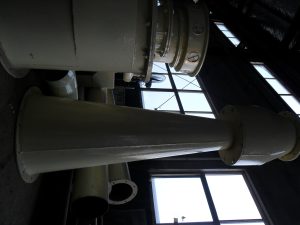
What is a Cyclone Separator and What are Its Advantages and Disadvantages?
Cyclone separators are widely used in industrial applications to separate solid particles from gas or liquid streams. They use centrifugal force generated by swirling airflow
+86 186 6169 9460
Under the action of the fan, the material moves to the classification area at a high speed from the lower inlet of the classifier with the updraft. Under the action of the strong centrifugal force generated by the high-speed rotating classification turbine, the material is separated, and the fine particles meeting the particle size requirements enter the cyclone separator or dust collector through the blade gap of the classification wheel for collection. The velocity of some fine particles entrained by coarse particles disappears after hitting the wall, and then decreases to the secondary air outlet along the wall of the cylinder. Through the strong washing effect of the secondary air, the coarse and fine particles are separated, the fine particles rise to the secondary classification in the classification area, and the coarse particles drop to the discharge port for discharge.
The classifier and cyclone separator, dust collector and induced draft fan form a classifying system. Under the action of fan suction, the material is moved from the lower inlet of the classifier to the classifying zone with the ascending airflow. Under the strong centrifugal force generated by the high-speed rotating turbine, the materials are separated and the fine particles which meet size requirements through the classifier impeller gap into the cyclone separator or the dust collector, the coarse particles entrained part of the fine particles collided with the wall and the velocity disappeared, descending along the cylinder wall to the secondary air outlet, and the coarse and fine particles were separated by the strong washing action of the secondary air. The fine particles rise to the classification zone for secondary classifying, and the coarse particles are lowered to the discharge port for discharging.
HTS series airflow classifier is designed by our German classifier experts, specially used for efficient dry classification of d97 3 microns - d97 45 microns and other ultra-fine powders. Its most critical component is its internal grading rotor that can rotate at high speed, and the grading rotor is installed horizontally. The classifier, cyclone collector, dust collector and induced draft fan form a complete classification system. Under the gravitational force of the induced draft fan, the material quickly enters the classification cavity from the inlet of the classifier with the airflow of the fan; the classifying rotor rotating at high speed generates a strong centrifugal force to block the coarse particles, so that the coarse particles cannot pass through the gap between the blades of the classification wheel At the same time, the gravity of the fan partially overcomes the centrifugal force and sucks away the fine powder. The fine powder passes through the gap between the blades of the classifying wheel and enters the cyclone collector or directly enters the dust collector, thus achieving the purpose of separating coarse and fine materials. Coarse particles entrain some fine particles and lose speed after hitting the wall, and descend to the secondary tuyere along the cylinder wall. After the strong elutriation and dispersion of the secondary air, the coarse and fine particles are further separated, and the fine particles rise to the classification area for secondary classification. The particles descend to the discharge port for discharge, or are sent back to the crushing equipment for further crushing and grinding.
| Parameter / Model | 70 | 100 | 140 | 200 | 260 | 315 | 400 | 500 | 630 | 750 | 1000 |
|---|---|---|---|---|---|---|---|---|---|---|---|
| Particle size(D97:μm) | 5-100 | 3-100 | 3-120 | 3-120 | 3-150 | 3-150 | 4-150 | 5-150 | 6-150 | 6-150 | 15-150 |
| Classification efficiency(η) | 60~80% | 60~80% | 60~80% | 60~80% | 60~80% | 60~80% | 60~80% | 60~80% | 60~80% | 60~80% | 60~80% |
| Classifier motor(kW) | 2.2 | 3 | 4 | 7.5 | 11 | 15/18.5 | 18.5/22 | 22/30 | 30/45 | 37/55 | 45/75 |
| Air volume(m³/h) | 150 | 300 | 600 | 1200 | 2000 | 3500 | 5600 | 8800 | 14000 | 20000 | 35000 |
Note: The production capacity is closely related to the particle size, specific gravity, hardness, moisture and other indicators of the raw materials. The above is only for selection reference.
| Parameter / Model | 200/4 | 315/3 | 315/4 | 315/6 | 400/6 | 500/3 | 500/4 | 500/6 | 630/6 |
|---|---|---|---|---|---|---|---|---|---|
| Particle size(D97:μm) | 5-100 | 3-100 | 3-120 | 3-120 | 4-150 | 5-150 | 6-150 | 6-150 | 6-150 |
| Classification efficiency(η) | 60~80% | 60~80% | 60~80% | 60~80% | 60~80% | 60~80% | 60~80% | 60~80% | 60~80% |
| Classifier motor(kW) | 2.2 | 3 | 4 | 7.5 | 11 | 18.5/22 | 22/30 | 30/45 | 37/55 |
| Air volume(m³/h) | 150 | 300 | 600 | 1200 | 2000 | 5600 | 8800 | 14000 | 20000 |
Note: The production capacity is closely related to the particle size, specific gravity, hardness, moisture and other indicators of the raw materials. The above is only for selection reference.

Cyclone separators are widely used in industrial applications to separate solid particles from gas or liquid streams. They use centrifugal force generated by swirling airflow
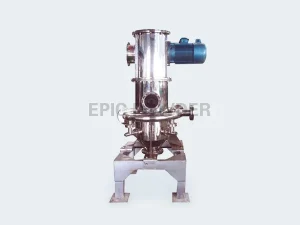
Various milling technologies are employed to achieve desired results in particle size reduction and powder processing. Two commonly used methods are jet mills and air
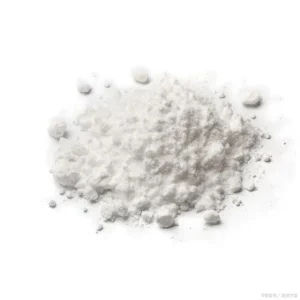
This article introduces the mechanical method of a high-specific surface area calcium hydroxide production line, including its process flow, equipment composition, preparation method, and performance
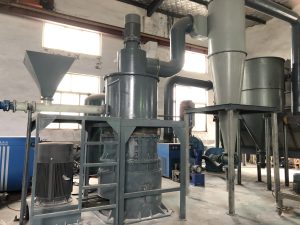
In recent years, the ring roller mill has gained significant attention in various industries due to its exceptional grinding capabilities. This advanced grinding technology offers

Introduction: Enhancing Calcium Carbonate Processing Efficiency Calcium carbonate is a widely used mineral in various industries due to its abundance, low cost, and versatility. To

The 26th International Exhibition “Khimia 2023” will be held from 30 October to 2 November 2023 in Moscow. The International Exhibition “Khimia” has been held
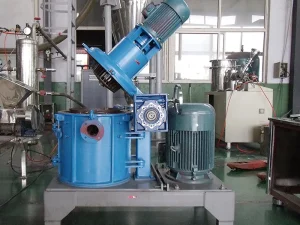
Introduction: Enhancing Carbon Black Processing for Improved Efficiency Carbon black, a highly versatile and widely used material, is a major component in a variety of

In today’s industrial world, the demand for fine powders has increased significantly. To meet this demand, various grinding technologies have been developed. One such technology
THE MACHINES WE CAN PROVIDE
CONTACT OUR TEAM
Please fill in the form below.
Our experts will contact you within 6 hours to discuss your needs for machine and processes.
© 2000-2023 Calcium Carbonate High-Value Process Expert | EPIC powder Machinery Co., Ltd. | All rights reserved | Privacy policy